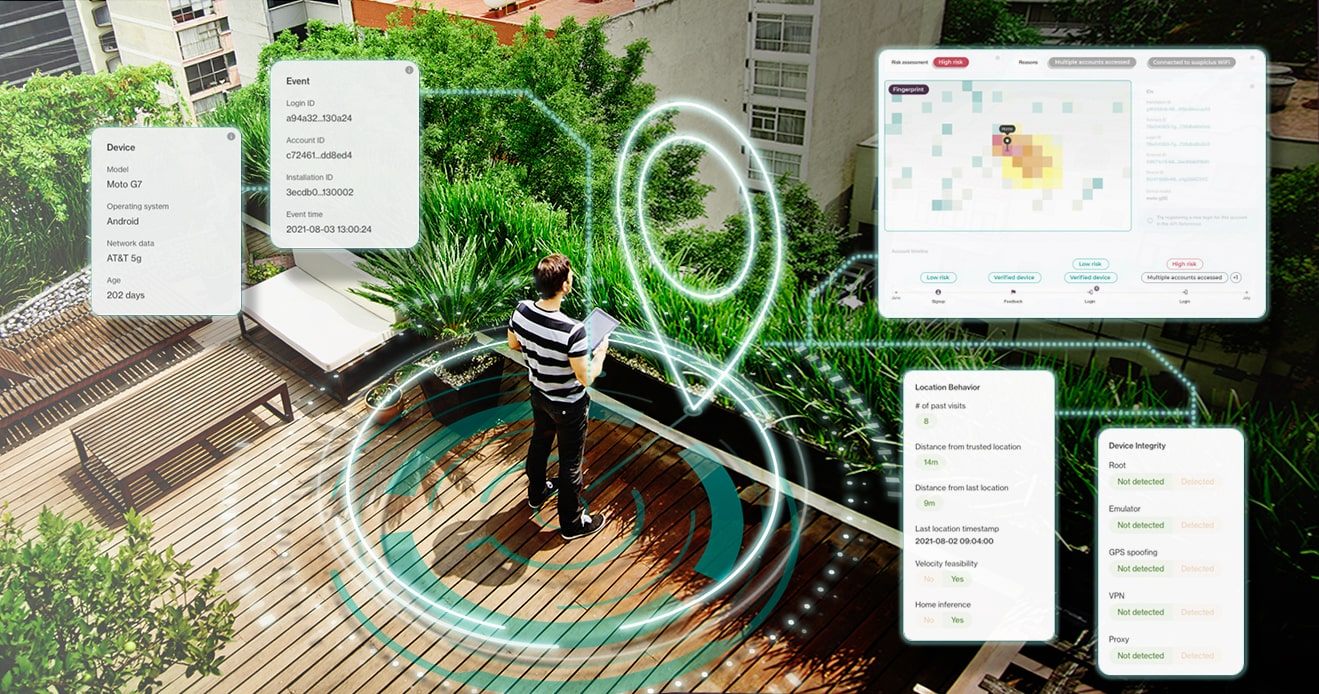- Blog
- Location-Based Device Intelligence: A new era in fraud prevention
Location-Based Device Intelligence: A new era in fraud prevention
While device intelligence has helped thwart online fraudsters in the past, it's time to welcome a new era of protection with location-based device intelligence. Discover what's coming next in the fight against fraud.
Subscribe to Incognia’s content
As our world rapidly becomes more digital, online security and fraud defense grows more important by the day.
Traditionally, device intelligence has played a major part in the fight against online fraud. But given the rapid advancement of technology and the growing sophistication of fraudsters, device intelligence technologies are proving to be much less effective than they once were.
Key TakeAways
- Today, device intelligence faces much tougher fraud challenges than in the past
- Many device intelligence solutions aren't strong enough to keep up with today's threats
- Other signals like location and on-device biometrics have a lot of potential
The downfall of device intelligence
Device intelligence has been a longstanding staple in the fraud prevention toolkit. However, the technological landscape is always evolving, and one effect of this evolution is that this method is simply not as impervious to attack as it once was.
Fraudsters today have a multitude of tools at their disposal to spoof device intelligence solutions. And what’s more, based on the lucrative nature of their fraud endeavors, many of these bad actors can afford to take the time to evade detection by resetting their devices or even leveraging multiple devices.
Behavioral Biometrics: Not a Panacea
In light of this gap in effectiveness, behavioral biometrics has emerged as an attractive supplementary solution, but unfortunately it has its own limitations.
Even though it excels in bot detection, behavioral biometrics doesn't directly compensate for the shortcomings of device intelligence. Furthermore, the noisy data associated with behavioral biometrics (like keystrokes and gestures) frequently leads to high false-positive rates, which undermines its reliability for fraud detection.
The Limits of Cloud Biometrics
Cloud biometrics, with its user-friendly nature, may seem like the answer. As a user experience solution, it's revolutionary – users only need to take a picture of a document and a selfie, and OCR technology coupled with facial recognition can do most of the identity verification process.
However, when it comes to fraud prevention, cloud biometrics falls short. And deepfake technology, which is quickly growing very sophisticated, will only make bypassing cloud biometrics security even easier.
Phone Verification: A Vulnerable Link
Phone verification has also proven to be vulnerable in the face of emerging threats. Fraudsters use phishing and social engineering to collect OTPs, and numerous data breaches from telecom companies have contributed to decreased confidence in this method.
In addition, SMS is not end-to-end encrypted and can be intercepted in multiple ways, including via SIM swapping and by bots.
On-Device Biometrics: A Strong Signal
While on-device biometrics is a strong signal that should be leveraged for fraud prevention, it also can’t replace device intelligence.
It is free and it’s harder to spoof, providing an extra layer of security. But on-device biometrics isn’t sufficient on its own because users frequently switch between devices. In the end, it remains just one piece of the puzzle in building a comprehensive security strategy.
Location: The New Answer
In light of the shortcomings of these methods, location-based device intelligence is emerging as the new champion in the fight against online fraud.
Location-based device intelligence is gaining traction because it unlocks powerful new capabilities in fraud prevention. Location spoofing detection drastically limits the geolocation territory in which a fraudster can operate. And precise location data can be used to trace multiple devices back to the same individual or organization with high accuracy.
No single security measure is entirely foolproof, but the use of location-based device intelligence can significantly bolster our defenses against online fraud. Coupled with a layered approach to security, it provides powerful protection in the face of an evolving threat landscape.
As device intelligence and other fraud prevention measures become less effective, location-based device intelligence is carving out its place as a formidable tool in our security arsenal. It's not just about staying one step ahead of the fraudsters - location is changing the game altogether.
To learn more about how Incognia uses location to strengthen fraud prevention, contact a member of our team today.




